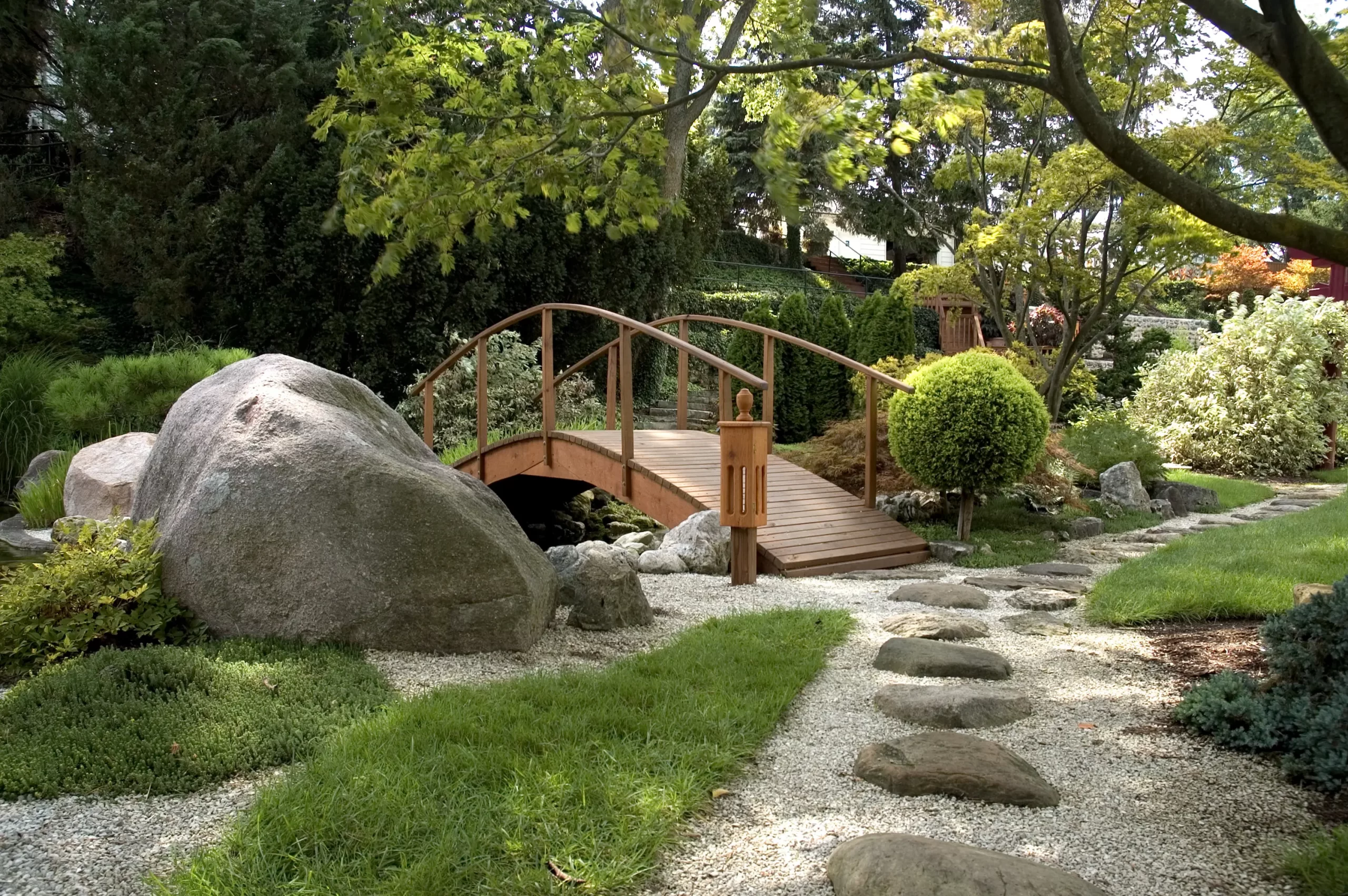
Frequently raking the gravel or sand helps maintain a smooth appearance, while creating swirling patterns that mimic water ripples. Regularly removing weeds and trimming shrubs also keeps your garden looking neat and tidy.
Rocks are often used to represent natural elements such as mountains and islands in a Zen garden. Varying rock sizes adds dimension and variety to your design.
Create a Blank Canvas
If your front yard has an area that would make a good Zen garden, clear it of any existing vegetation and other elements. Then, choose a flat site that is suited to the meditative design and dig holes for your rocks and plants. Then, rake the soil so it has an even texture and remove any weeds.
While authentic Zen gardens are usually sand or gravel-only, you can add plants and water features to the space as long as they suit its aesthetic. For example, a small pond or waterfall can enhance the calm feeling of the space.
A DIY tea garden, such as one in a wooden tray, also combines Zen and fairy gardening. Just layer sand with flat pebbles and plant slow-growing greenery in the tray, like bamboo or cherry blossoms. Moss is another natural element that evokes a Zen feel and requires little maintenance.
Incorporate Elements of Nature
Besides the gravel or sand layer, you can add a variety of other elements to create a one-of-a-kind Zen garden. Moss, shrubs and lanterns can all enhance the aesthetic of a tranquil oasis while contributing to its meditative atmosphere.
Small pebbles are often added to create different patterns and lines. You can also vary the size of the stones to add dimension and a calming texture.
Incorporate water features, like a pond or trickling fountain, to represent the natural ebb and flow of life. A koi pond or a water labyrinth is another way to create a peaceful ambiance.
Include a few carefully selected plants, like bonsai trees, topiaries, bamboo or Japanese maples, to complement your hardscape and bring in a touch of nature. You can also add a bridge or pathways to guide visitors through the garden and symbolize the journey toward enlightenment.
Incorporate Water Features
When designing a Zen garden, water features are an important component to promote calmness. A small pond or fountain is the perfect addition to your meditation space, as it will create an ambient sound that will encourage tranquility and mental focus.
The base of a Zen garden is traditionally either gravel or sand. Gravel provides a smooth and calming surface that is easily raked, while sand can be shaped into patterns and curves to emulate movement like a flowing river or ocean waves.
Incorporating a variety of rocks in your Zen garden is also beneficial to bring in texture and color. Moss, Japanese maples, and shrubs are common plant choices for Zen gardens. The evergreen nature of these plants can provide a sense of stability and serenity throughout all seasons.
Add Focal Points
Incorporate focal points to help bring a garden together. Moss, shrubs, lanterns and bonsai trees are ideal choices to add interest and a peaceful atmosphere.
Consider adding a pond or waterfall to your Zen garden for an additional visual element. The sound of water can also have a soothing effect and create a calming environment.
Rocks are a must when creating your Zen garden, as they symbolize large mountains in traditional zen designs. Vary the shapes of your rocks to add a more naturalistic look. Then, arrange them in a non-symmetrical pattern to create balance and harmony within your garden. In addition, incorporate a stone pathway through the gravel area to help visitors explore your garden and create stopping points to reflect. Ensure the pathway is easy to walk, as uneven ground may be distracting and uncomfortable.
Keep It Simple
A Zen garden is meant to be a calm, peaceful space to escape from the craziness of life. To help achieve this, it is important to keep the design as simple as possible.
Using natural materials from your own yard is a great way to save money while creating a Zen garden. Plants like succulents and ornamental grasses work well with this style of gardening, as do evergreen shrubs and trees.
Regular raking is essential to maintain the appearance of your zen garden. In addition to preserving the aesthetic, this practice helps to establish attentiveness and cultivate personal discipline. Asymmetry is also acceptable, as nature is rarely symmetrical; however, it is best to stick with odd numbers of elements and varied sizes. These small details can make a huge difference in the overall look of your garden.







